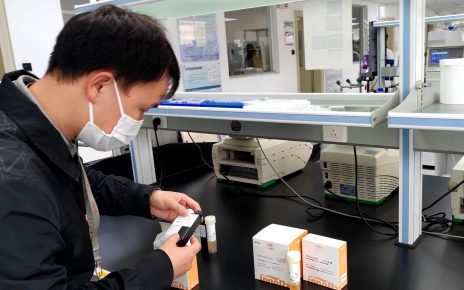
Ever since I can remember, I was constantly asking questions. My parents called me “Miss Inquisity” because of it. I was that quirky kid on the playground who played with butterflies and spied for ladybugs. After I came home from school, I binged How It’s Made on the Science Channel. Oh, that’s what makes my bubble gum so sticky! Or, this is what they put in Oreos, really? I thought to myself. Seeing all this, you’d think that STEM would be the perfect fit for me, right? For a long time, I thought so too. My initial impressions of the field were that it would satisfy my unrelenting desire to know why. But as I grew up, this only seemed farther from the truth.
In high school, when I finally had the academic freedom to explore my interests, I took full advantage. Planning my own classes, I loaded up on every science course I could find. Chemistry, biology, you name it, and it was on my schedule. Though I wasn’t sure exactly what it was I wanted to pursue in STEM yet, I hoped that these courses would help me find out. Come junior year, I was still undecided and even more concerned because it was supposedly the hardest point of high school. I had some of the most difficult classes on my agenda. AP chemistry, precalculus AB—most of my peers would barely give these a second glance. But once I started studying the material, I finally understood why they held back, why I consistently heard so many of my friends ask “When am I ever going to use this?” or “When is this ever going to help me?”
Much to my disappointment, the reality of studying these “hard sciences” is far removed from the way it is shown in the media—unlike anything I’d seen in watching all those episodes of How It’s Made. When you have so many formulas, constants and theorems to memorize, it is far too easy to get lost in the complexity of it all. After all, how motivating is it to remember a bunch of numbers when you don’t really know why it even matters to use them? And trust me when I say I completely empathize! It is hard.
This is why I nearly give up on pursuing STEM. I clearly remember a moment in AP chemistry, reviewing the basics of elemental composition, when I asked myself, Why do I even need to know this, what is the point of it all? I was drumming my mechanical pencil on the table for five minutes straight, stumped on this one problem, and barely had the stamina to continue. Thankfully, the assignment wasn’t due till a week later when I finally had the wake-up call I never knew I needed.
I didn’t expect to have such a breakthrough in my AP psychology class, but it was Ms. Brown’s unique approach to instruction that made me reconsider the idea of throwing it all away—my desire to pursue STEM, that is. She forewarned us that neuroscience was one of the more challenging units this year, and after my recent fallout with chemistry, I honestly wasn’t looking forward to it.
After she gave our class a brief overview of the unit, she immediately divided us into Zoom breakout rooms to analyze real-world scenarios using neuroscience terminology. I remember one in particular about a man who suffered cerebral trauma in a car accident and couldn’t feel any pain. She surprised us by popping into our room, waiting patiently for an answer. I always hated the awkward silence, and for no other reason than to just break the tension I quipped “Well, the adrenal gland of the endocrine system releases adrenaline, decreasing sensation to pain, allowing the man to feel temporarily stronger, taking control of his situation.” She commended my participation and lightly scolded the students with their cameras turned off as she left the room.
I think I might like this, I thought to myself. Shortly, one of my peers unmuted and said “Wow, you’re really good at this!” But at the time, I didn’t think it was so much my skill, as much as how I loved that neuroscience had reignited my passion for discovering the why. What makes people happy, biologically, what is really going on? What factors in our brains are conspiring to create a certain thought, reaction or emotion? But even more than these provocative questions was the idea that there is still so much we don’t know about the brain—meaning just that much more for me to discover!
So, if you really want to know why more young people aren’t entering STEM, I hope you’ll remember this story. While I may not have a concrete answer, I do have my experiences, and, knowing why—where your learning is going to take you—is one powerful feeling.
This is an opinion and analysis article; the views expressed by the author or authors are not necessarily those of Scientific American.



